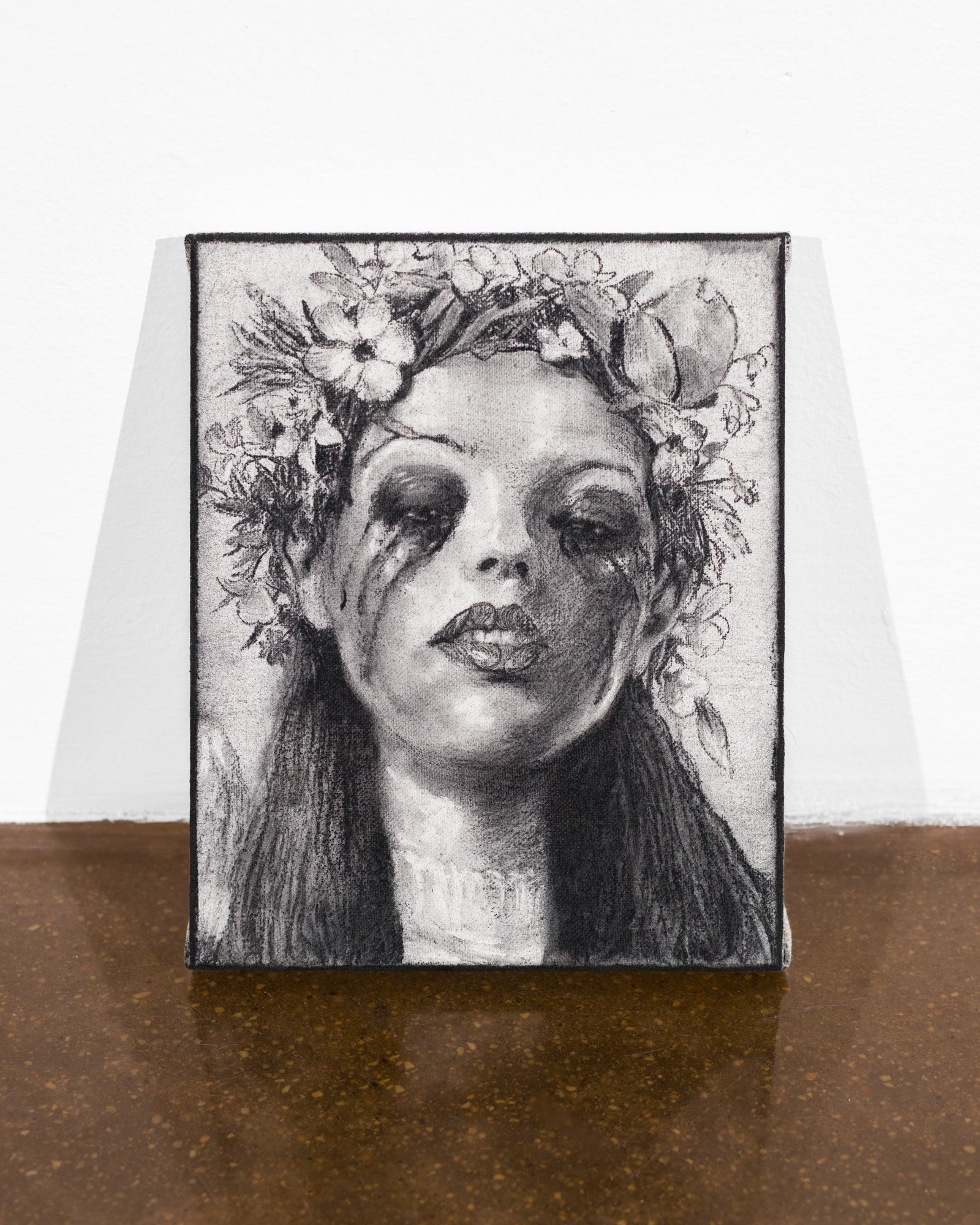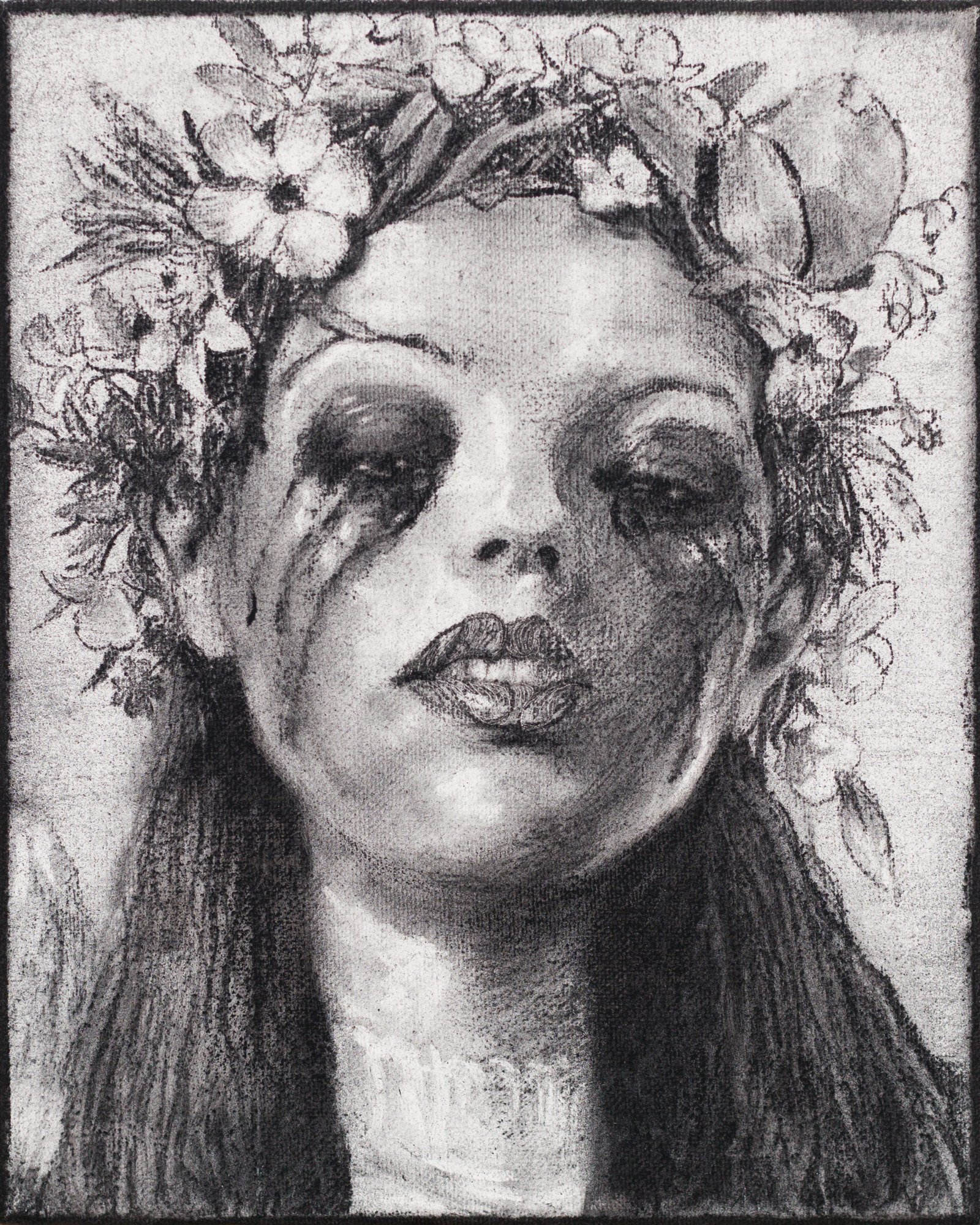Lucie Hošková, despite her young age (born in 1999), is already an established artist with exhibition experience in Prague, Pardubice, and Kutná Hora. Her works, which blend an abstract informal aesthetic with specific mimetic scenes referencing Gnosticism and Neoplatonism, reveal a surprisingly intricate cosmology. The physis of matter in Hošková's work is conceived as a diabolical realm of suffering and decay, while its antithesis, the antiphysis of the metaphysical sphere of spirit, is depicted as a beautiful yet tragically unattainable goal, imprisoned within the human body (soma sema).
The artist has created her own myths (bearing some resemblance to the esoteric teachings of William Blake) with an overlay of Gnostic creationist doctrine, where the divine Pleroma, interacting with Sophia, gave rise to Chaos as the womb of the Demiurge, an intermediary between God and the material world. The two Trees of Knowledge of Adam and Eve, together with purely supersensory (noumenal) aeons, form the backdrop of the artist's philosophical tragedy. In this narrative, love is unmasked as primal desire (see Schopenhauer's Wille zum Leben), and the sole purpose of life is the liberation of the psyche, which can only occur after the terminal decomposition of the body. This body, encased in its sarcophagus of tendons and tissues, crushes our spiritual essence like a medieval iron maiden.
According to the rather suggestive title of the work, one might assume the canvas primarily presents an allegory of copulation, where the bone serves as a phallic symbol, and the wedge acts as a euphemistic metonym for the vagina. The peculiar semi-abstract form on the painting indeed correlates with the obscene German term Fellfrosch ("leather frog"), which Rammstein's frontman, Till Lindemann, unfavorably used in his artistic output to refer to female genitalia.
However, a closer reading of the composition evokes the image of a flayed and indifferently discarded skin, alluding to Marsyas punished by Apollo or St. Bartholomew in Michelangelo's fresco The Last Judgment, where the saint’s flayed skin also serves as a morbid self-portrait of the artist. The empty, carelessly discarded tissue presenting the body as a repulsive shell of the suffering soul illustrates the schism between matter and spirit, where the material represents everything base, mortal, and corporeal in contrast to the metaphysical realm of the psyche, which withers, falters, and grieves within its prison of flesh.
Levitating above the decapitated head is a silvery crown of thorns, which simultaneously serves as a halo—the viewer is presented as a martyr to their own corporeality, without hope of ascension. We are left to wonder whether we are dealing with a human corpse or gazing upon a butcher-slaughtered hybrid of a pig and the Lamb of God. The amorphous convolution in question conceals additional, surprisingly Gothic dimensions. Its spiral shape twists like the staircase of the Albrechtsburg Castle in Meissen and folds like the drapery of the Golden Virgin (Vierge Dorée) on the portal of Amiens Cathedral.
Two swollen orifices, reminiscent of Courbet's pornoscopic painting The Origin of the World, cannot go unnoticed. Analogous to the two towers of cathedrals symbolizing Adam and Eve, one is more robust while the other is more delicate. These oozing cavities, resembling scarred Christian mandorlas, weep blood mournfully, as if aware they will never heal. The formless, melting object provokes questions about the shape of our "self." If we are neither tissues nor bones, what then constitutes us as humans? The answer lies in our advanced capacity to feel and inflict pain.
The carcass, instead of lying on a bier, has found its final refuge sprawled upon the ground—a symbol of both one of the four alchemical elements and a reference to Gaia as "Mother Earth," the daughter of Chaos, eternally birthing new Titans to violently overthrow the pantheon of ancient gods. The primary semantic weight, however, lies in the aforementioned Armageddon of the principles of the divine creative spirit and perpetually dying matter, locked in constant conflict and torturous contradiction, where life is the perpetuum mobile of our endless suffering.
– Kamil Princ













